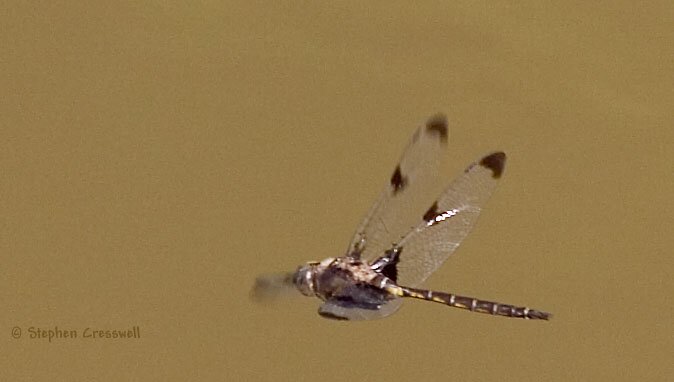

Family: Corduliidae
Length: 56-81 mm
The Prince Baskettail is the region's only Emerald that has dark wing tips. Each wing also usually has a basal spot and a brown nodal spot. The abdomen has yellow lateral markings that fade with age.
While a beginner might confuse this species with one of the skimmers with marked wings (such as the female Twelve-spotted Skimmer), in the Prince Baskettail the abdomen is thinner, and the length of the abdomen is about as long as a wing. Also, skimmers perch often but Prince Baskettails (and other Emeralds) seldom do.
Epitheca princeps hunts high off the ground, even among the treetops.
Females may be seen flying in the evening, with an orange egg-ball on the tip of their upcurved abdomen. Soon they will place the eggs on the stem of a water plant, where the ball will unroll to form an egg-rope about half a meter long.
Prince Baskettail is among the more common species in West Virginia, and is probably found in every county.
A number of other members of this group are found in West Virginia too, but can prove frustrating since they seldom perch, are hard to identify on the wing, and are adept at avoiding insect nets.
An Australian researcher (Stange, 1981) used Corduliids to examine the purpose and function of ocelli in dragonflies. Using a wind tunnel and LED pinpoint light sources, he showed that the dragonflies moved their head around the pitch axis in response to light changes perceived by the median ocellus (moving the apex of the head toward the light). Changes in light perceived by the lateral ocelli induced the dragonflies to move their head along the roll axis. The author suggested that one function of the ocelli is to help the dragonfly detect the contrast between the ground and the sky, in both dim and bright light.

Left: A flying Prince Baskettail.

